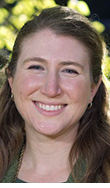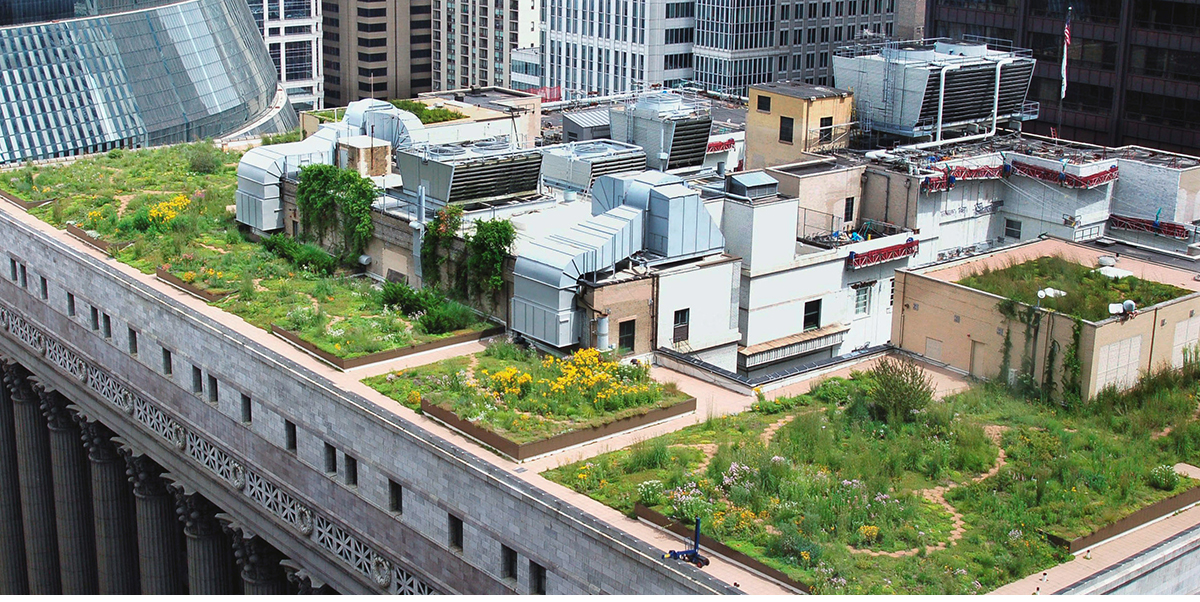Planning prof, fellow researchers learn how ‘green’ roofs can best reduce heat wave effects

Sierra Woodruff
As memories linger of a [1995 Chicago heat wave] (https://www.chicagotribune.com/news/ct-chicago-heat-wave-20-years-later-met-20150715-story.html) that caused more than 700 deaths, Windy City urban planners have new knowledge to help them use “green” roofs to counteract the effects of future heat waves from a study by researchers that included Sierra Woodruff, Texas A&M assistant professor of [urban planning] (http://laup.arch.tamu.edu/) .
Extreme heat causes 130 deaths per year — 20 percent of annual natural hazard deaths in the United States — and climatologists believe temperatures will rise in the future. The many benefits of green roofs and green walls include reducing temperatures of the surrounding air, lowering a building’s energy use, cleansing stormwater and improving air quality as well as providing aesthetic benefits and higher property values.
In the study, Woodruff and an interdisciplinary group of scholars investigated Chicago climate models and electricity consumption loads. They located which census tracts held the city’s socioeconomically vulnerable residents to determine where future green roofs can best reduce temperatures, ease electricity consumption, and help populations most vulnerable to heat exposure.
According to the city of Chicago’s website, green roof coverage already accounts for an estimated 5.5 million square feet, a number expected to rise given the city’s goal of 6,000 green roofs by 2020.
“It’s critical not only to identify where green roofs can lower temperatures most, but also to identify populations that are disproportionately affected by high temperatures,” said Ashish Sharma, research assistant professor of civil and environmental engineering and earth sciences at the University of Notre Dame, who led the study.
“What we’ve seen when it comes to urban planning is decisions are made without interdisciplinary input,” Sharma said. “Now, we have a framework for answering the question, how do we improve urban resilience to extreme heat?”
The next step, Sharma said, is to account for multiple variations, such as variables that take place throughout the day or season, so that models can be tailored to other cities and their unique conditions.
The study was funded by the Notre Dame Environmental Change Initiative, the Notre Dame Center for Research Computing, the National Center for Atmospheric Research supercomputing resources, and the United States Department of Agriculture-National Institute of Food and Agriculture’s Agriculture and Food Research Initiative.
Woodruff’s research focuses on how planning can better address environmental and climatic change.
She is examining relationships between planning and emergency agencies, plan coordination, and urban resilience to flooding in several National Science Foundation-funded projects, and is also leading a project to quantify and compare the policies that cities across the U.S. have adopted to build natural disaster resilience.
Richard Nira
rnira@arch.tamu.edu
Tags
- interdisciplinary
- landscape architecture & urban planning
- laup gallery
- planning
- research
- rss
- sustainability
Related Posts

Tactical urbanism garden installation transforms space

Oct. 23 symposium spotlighted college, faculty research

Planning profs studying systems, hazard plan links

Oct. 29 symposium spotlights college, faculty research
Follow Us
Facebook Twitter Vimeo Youtube Flickr RSS
Recent Posts

Planning prof heads study of disaster housing aid

A message from the dean

Former student remembered as expert planner

Leading educator named new head of Architecture Dept.






_thumbnail_small.png)
